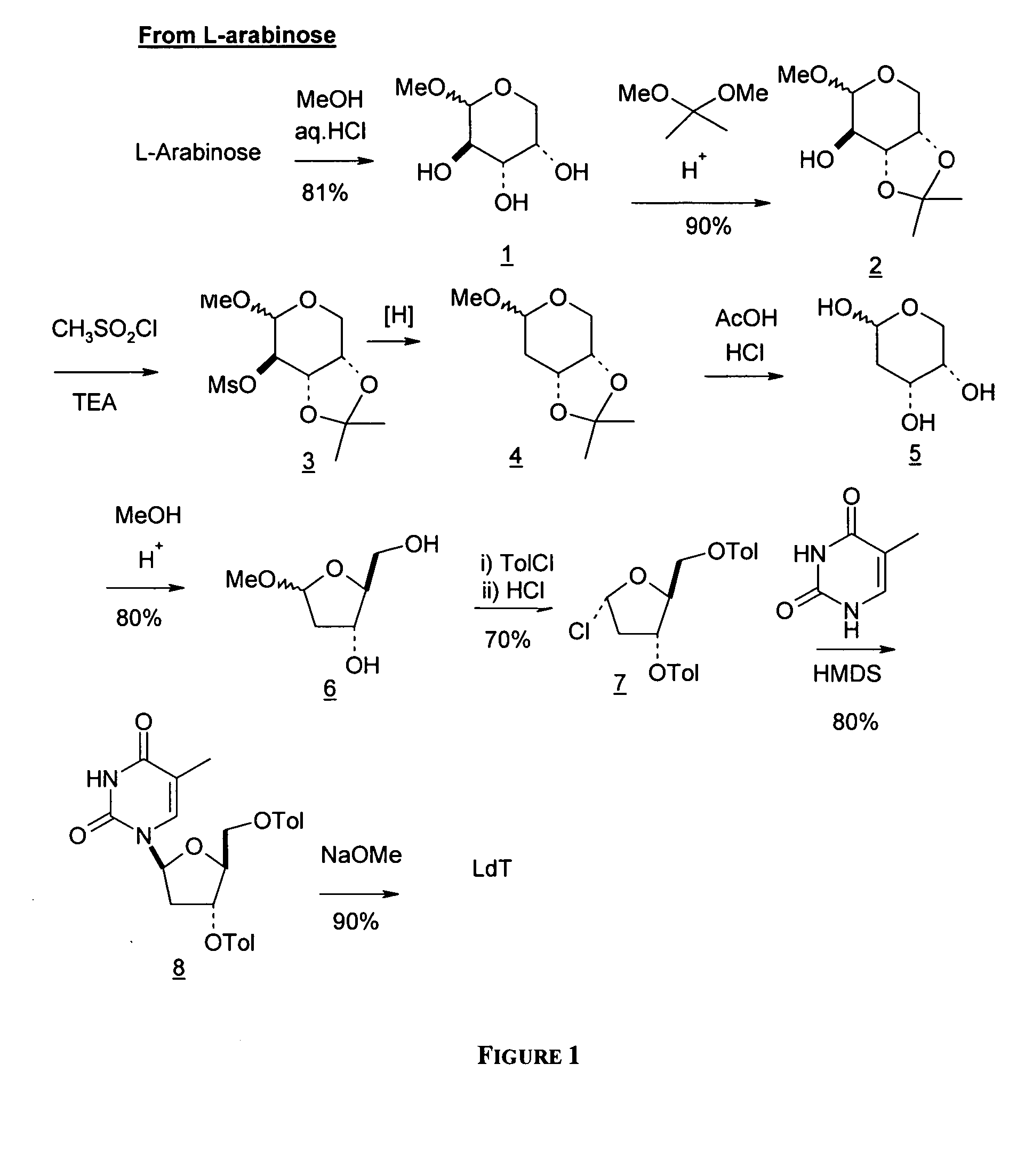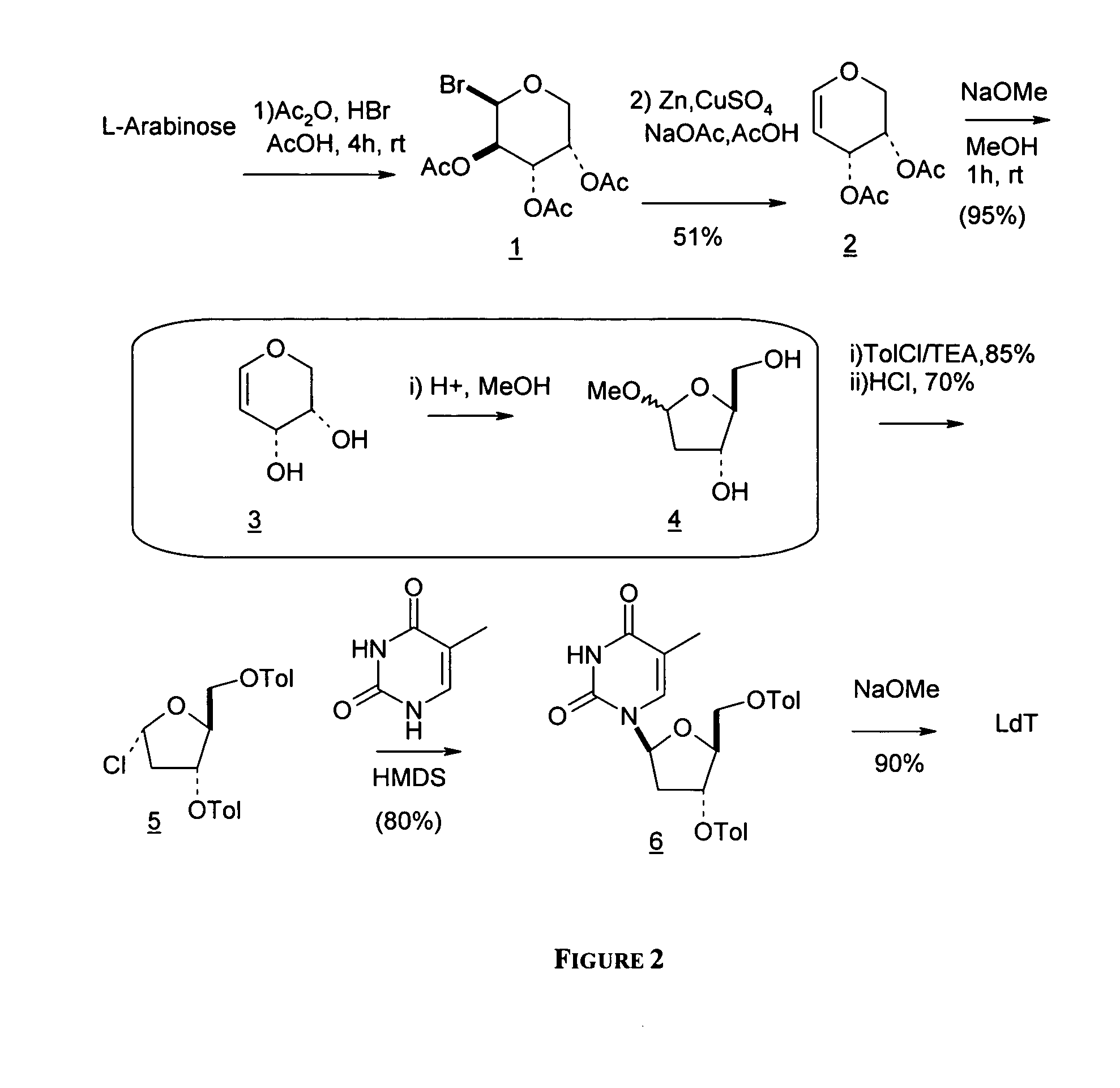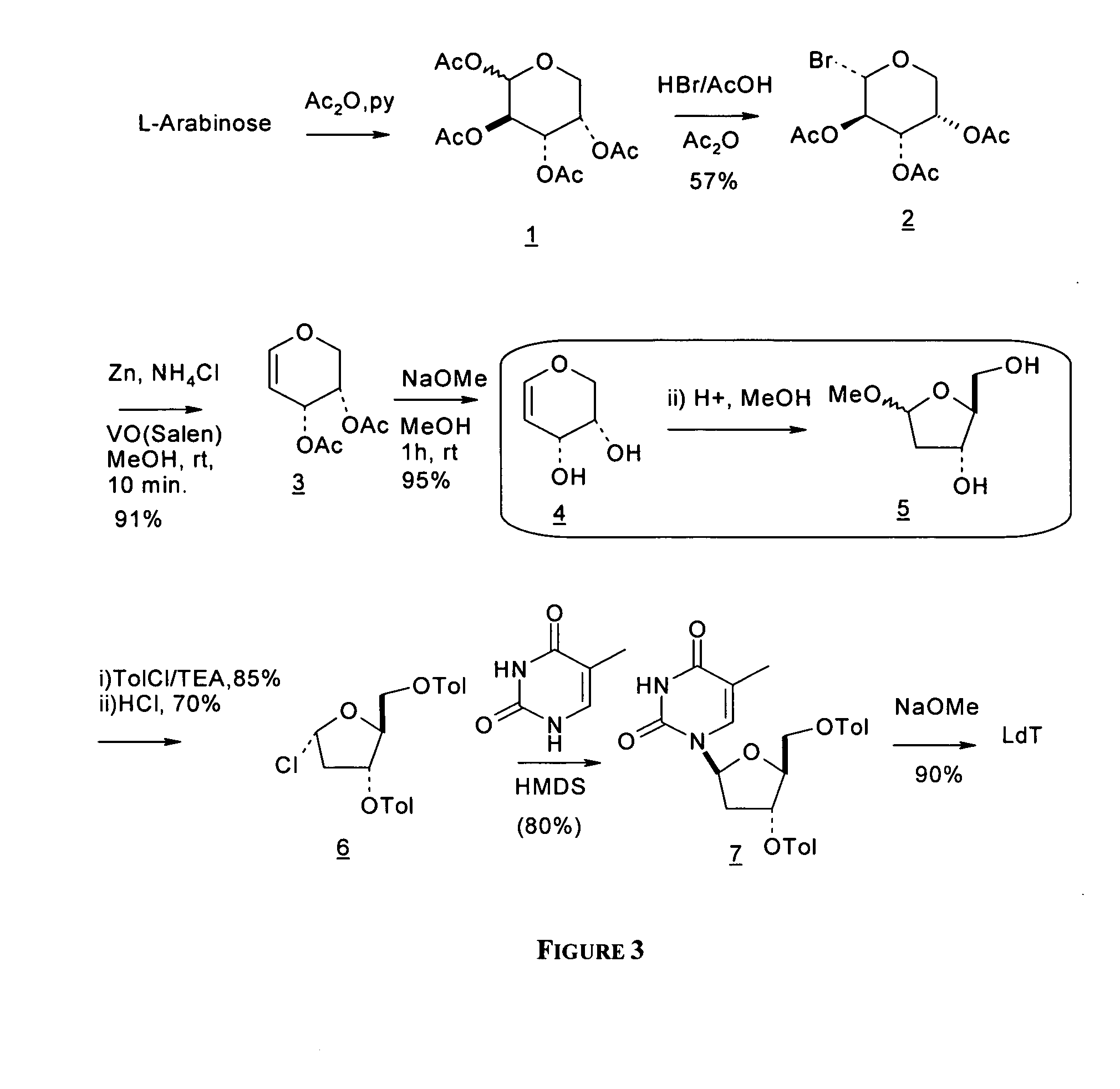Synthesis of beta-L-2'-deoxy nucleosides
a technology of deoxynucleosides and beta-l-2', which is applied in the field of synthesis of beta-l-2'-deoxynucleosides, can solve the problems affecting the quality of product, and affecting the product quality of product, so as to achieve the effect of reducing the yield of product and high product yield
- Summary
- Abstract
- Description
- Claims
- Application Information
AI Technical Summary
Benefits of technology
Problems solved by technology
Method used
Image
Examples
second embodiment
In a second embodiment, an alternative synthesis for preparing 2′-deoxythymidine is provided that also utilizes D-xylose as a starting material using alternative reagents and advantageously eliminates three chromatographic purifications that involve highly polar, water soluble, UV-inactive reagents (FIG. 23). The process comprises: (a) oxidizing D-xylose first with bromine / water and potassium carbonate to provide D-lyxono-1,4-lactone (2); (b) reacting the lactone of step (a) with acetic and hydrobromic acid, for example at 45° C. for 1 hour and then at room temperature with stirring for about 1.5 hours, to provide 2,5-dibromo-2,5-dideoxy-D-lyxono-1,4-lactone (3); (c) reacting the lactone of step (b) with isopropyl acetate and sodium iodide in TFA, and, for example heating the reaction mixture to about 85° C. for about 1.5 hours, to form 5-bromo-2,5-dideoxy-D-threo-pentono-1,4-lactone (4); (d) reacting the lactone from step (c) with potassium hydroxide and water and, for example, aft...
example 1
L-arabinose is converted to the corresponding methyl glycoside and the 3- and 4-hydroxyl groups are protected as the acetonide derivative. The scheme below shows a simple approach to deoxygenate the 2-hydroxy group of compound 2 by converting it to the corresponding mesylate group and subjecting this mesylate intermediate to reductive cleavage conditions to produce the 2-deoxy intermediate 4. See H. Urata, E. Ogura, K. Shinohara, Y. Ueda, and M. Akagi, Nucleic Acids Res. 1992, 20, 3325-3332; and J. W. Pratt, N. K. Richtmyer, and C. S. Hudson, J. Am. Chem. Soc. 1952, 74, 2200-2205.
From L-arabinose
example 2
L-arabinose is converted to the corresponding glycal derivative via a key reductive elimination step and converting the resulting glycal intermediate to methyl 2-deoxy ribofaranoside. See B. K. Shull, Z. Wu, and M. Koreeda, J. Carbohydr. Chem. 1996, 15, 955-964; M. L. Sznaidman, M. R. Almond, and A. Pesyan. Nucleosides, Nucleotides &Nucleic Acids 2002, 21, 155-163; and Z.-X. Wang, W. Duan, L. I. Wiebe, J. Balzarini, E. D. Clercq, and E. E. Knaus, Nucleosides, Nucleotides &Nucleic Acids 2001, 20,11-40.
PUM
| Property | Measurement | Unit |
|---|---|---|
| Temperature | aaaaa | aaaaa |
| Temperature | aaaaa | aaaaa |
| Temperature | aaaaa | aaaaa |
Abstract
Description
Claims
Application Information
 Login to View More
Login to View More - R&D
- Intellectual Property
- Life Sciences
- Materials
- Tech Scout
- Unparalleled Data Quality
- Higher Quality Content
- 60% Fewer Hallucinations
Browse by: Latest US Patents, China's latest patents, Technical Efficacy Thesaurus, Application Domain, Technology Topic, Popular Technical Reports.
© 2025 PatSnap. All rights reserved.Legal|Privacy policy|Modern Slavery Act Transparency Statement|Sitemap|About US| Contact US: help@patsnap.com



